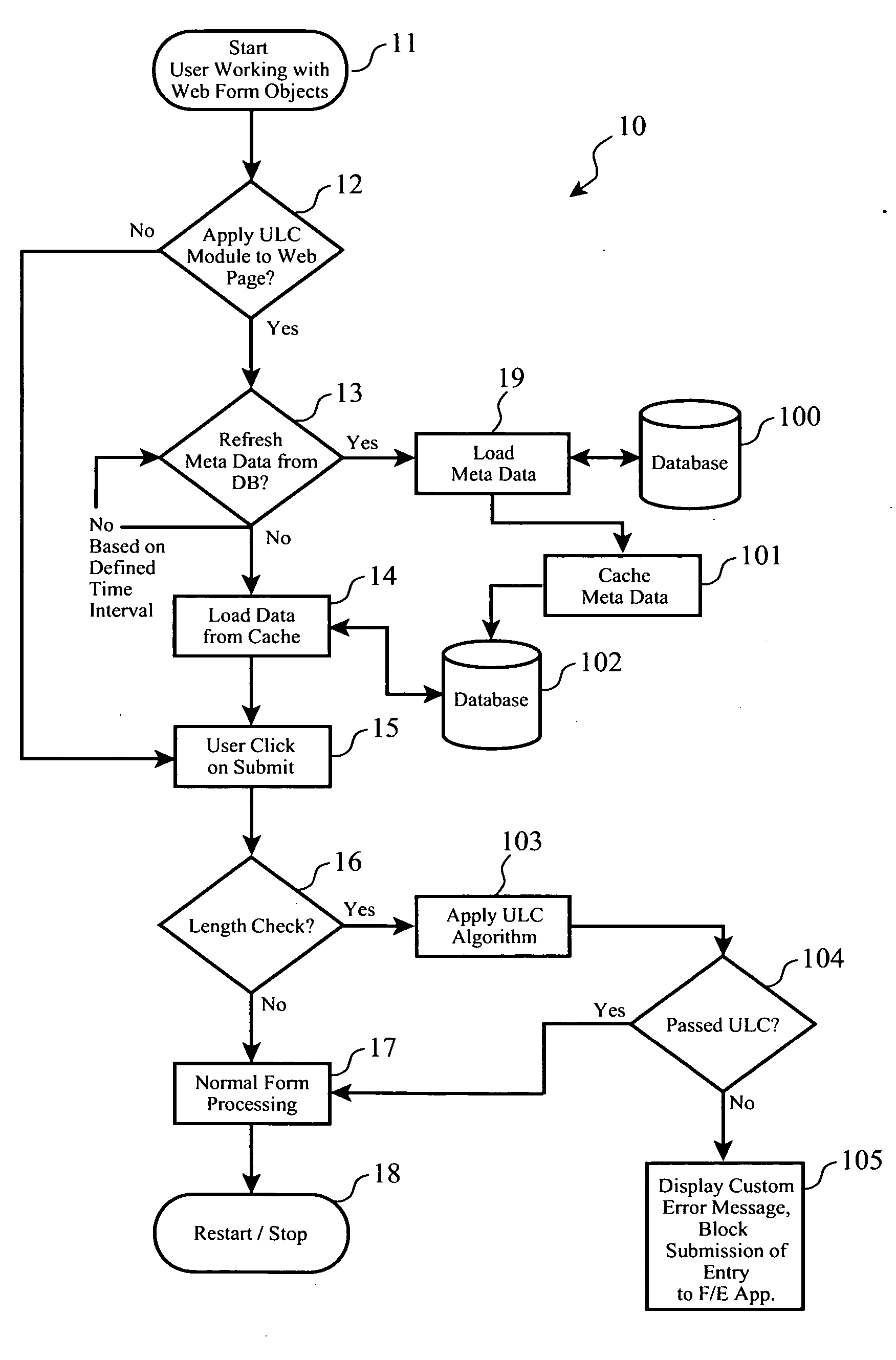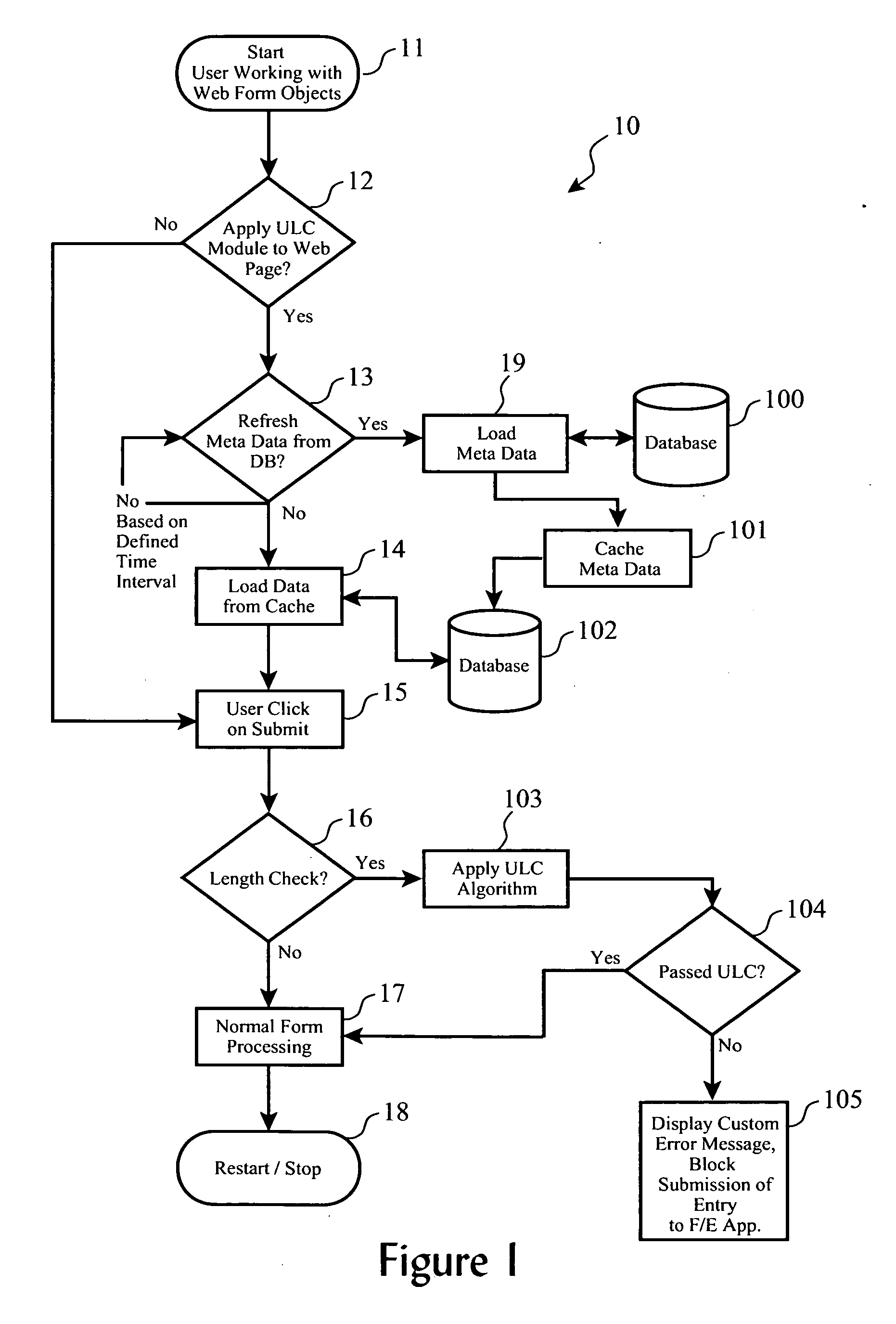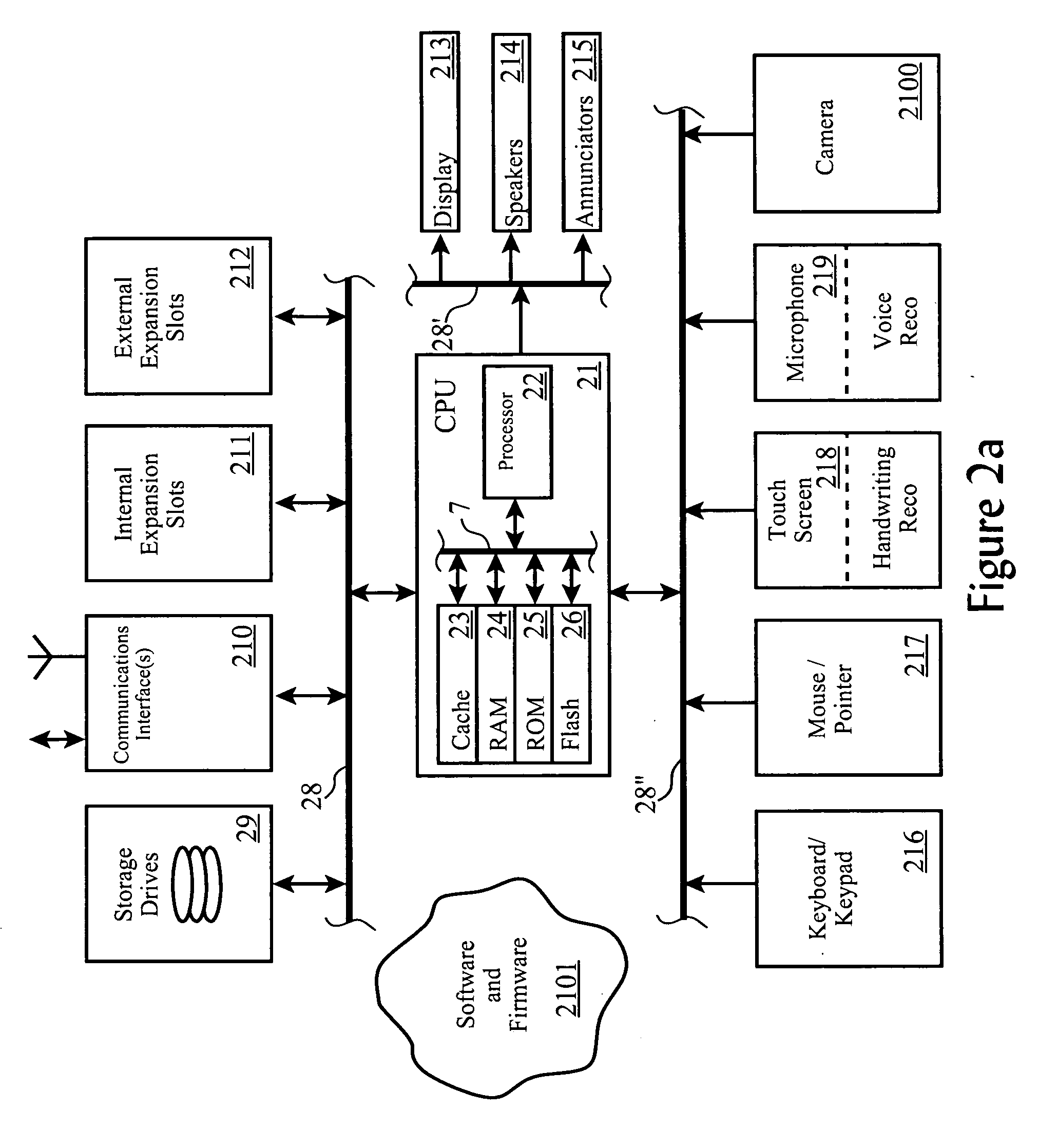Dynamic string length checking for off-line processing using client-side caching of database catalog
a database and dynamic string technology, applied in the field of data control, can solve the problems of fundamentally flawed processes for checking input string length, unusable error messages, and difficult to solve, and achieve the effect of simplifying processing
- Summary
- Abstract
- Description
- Claims
- Application Information
AI Technical Summary
Benefits of technology
Problems solved by technology
Method used
Image
Examples
embodiment
Strut-Based Embodiment
[0049] In this implementation, a Strut is employed to automate the process of putting the hidden fields in web pages. From a programming perspective, this can be done automatically. In operation, the front-end application program passes the sizes of database fields to hidden fields in the web pages, then as users are entering the characters in the web pages, the front-end application program calculates the number of bytes for UTF-8 strings until the strings reach the maximum allowable fields for the database.
Client-Side Cached Catalog Embodiment
[0050] In this implementation of the invention (51), a database catalog (54) is stored as a cache on the client side (31), which is used to perform length checking at the client, such that only checked or qualified input strings (36′) are sent to the front-end application programs (33), as shown in FIG. 5c. This embodiment works very well with off-line application programs, and has performance advantages over real-tim...
PUM
 Login to View More
Login to View More Abstract
Description
Claims
Application Information
 Login to View More
Login to View More - R&D
- Intellectual Property
- Life Sciences
- Materials
- Tech Scout
- Unparalleled Data Quality
- Higher Quality Content
- 60% Fewer Hallucinations
Browse by: Latest US Patents, China's latest patents, Technical Efficacy Thesaurus, Application Domain, Technology Topic, Popular Technical Reports.
© 2025 PatSnap. All rights reserved.Legal|Privacy policy|Modern Slavery Act Transparency Statement|Sitemap|About US| Contact US: help@patsnap.com



